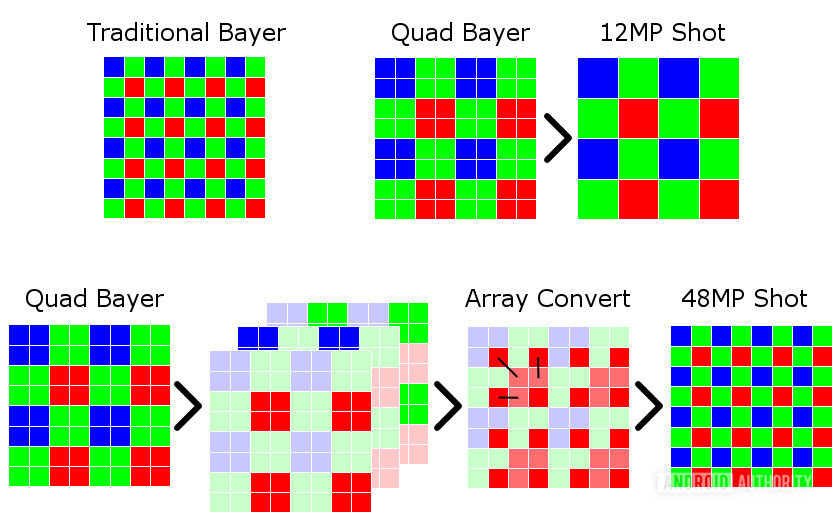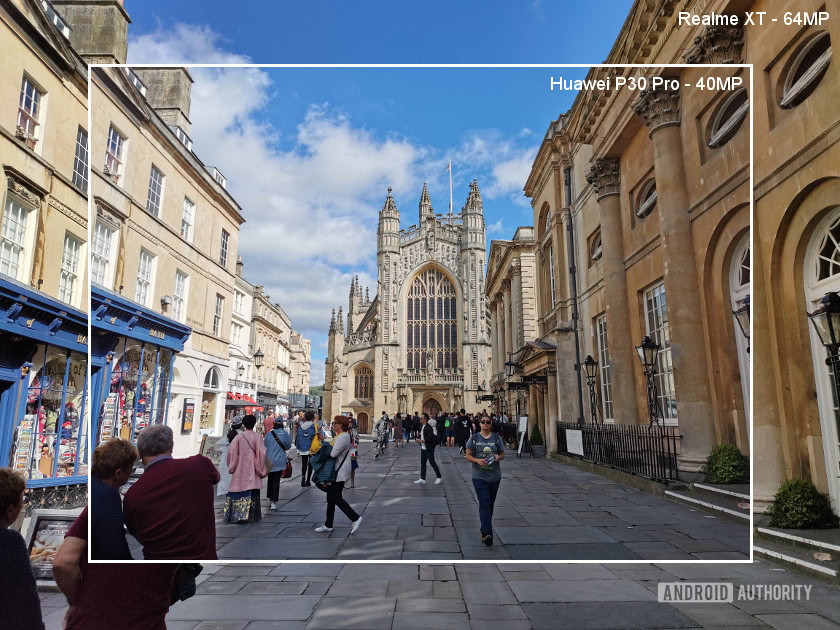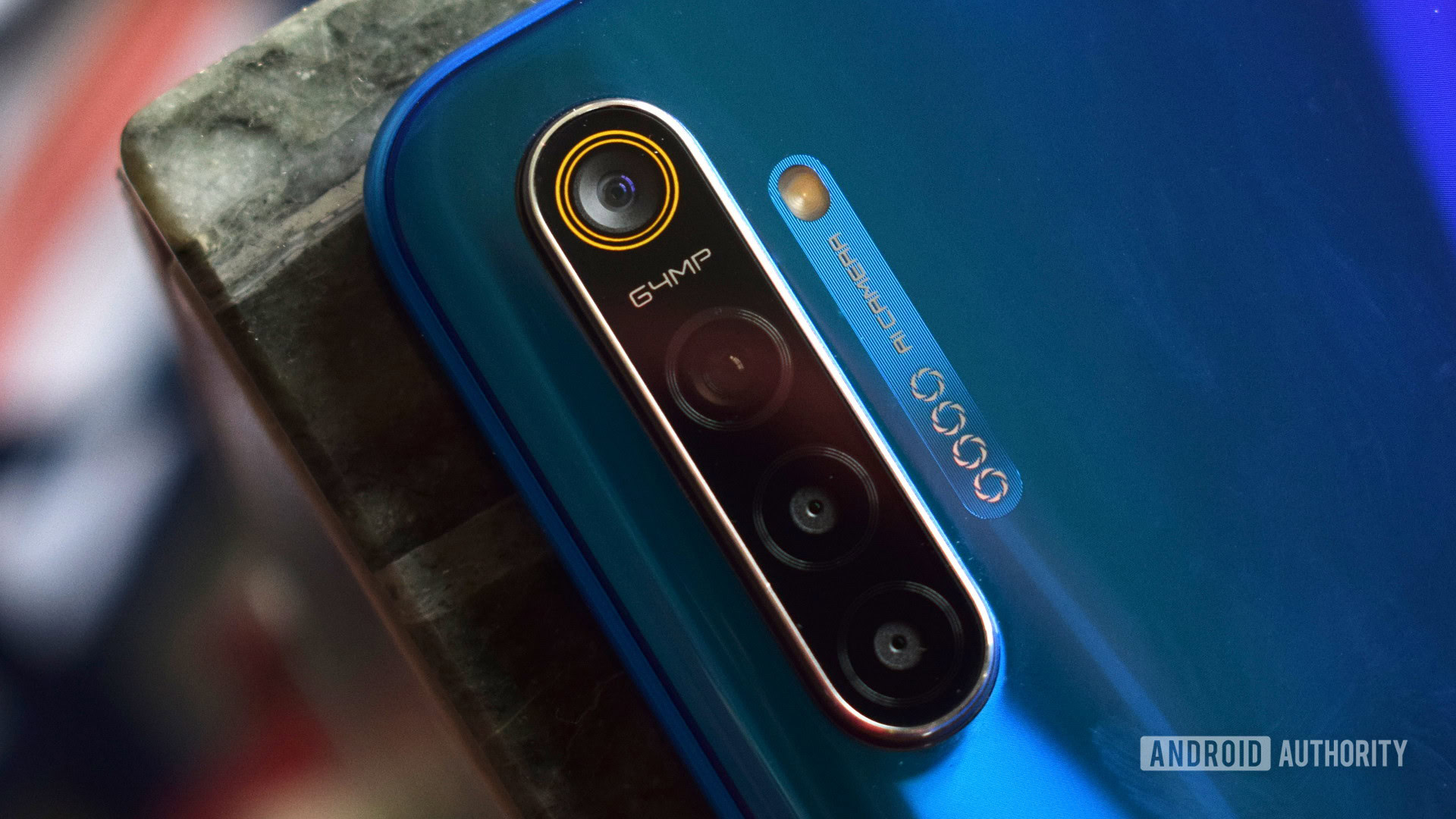Affiliate links on Android Authority may earn us a commission. Learn more.
64MP realme XT vs 40MP HUAWEI P30 Pro: The hi-res camera showdown

Huawei’s reintroduction of the 40MP smartphone camera was a surprisingly impressive revelation back with the HUAWEI P20 Pro. The company improved on the formula’s low-light performance in the HUAWEI P30 Pro, setting a new bar for high-res mobile photography. Now there’s a new champion of the pixel count in town – the 64MP realme XT.
These two smartphone cameras are in many ways quite different, with different sensor sizes, lenses, and image post-processing. They’re also clearly aimed at very different price points. However, there are some key similarities based on prevailing mobile photography trends. Both phones achieve their seemingly huge megapixel count through the use of “quad Bayer” filters and a technology called pixel binning (or Tetracell, if you ask Samsung).

In a nutshell, pixel binning takes a lower resolution sensor, slices each pixel into four, and uses a re-mosaic algorithm to construct a higher resolution image. The level of detail isn’t as good as a traditional Bayer-filter camera and the smaller pixel sizes can reduce light capture, resulting in more noise. However, these sensors claim to take good pictures in low-light by combing light from these four pixels back together. While more resolution sounds great on paper, there are constraints on what can be achieved in a small mobile form factor. You can read more about these at the link below:
Read more: Don’t fall for the 100MP camera hype
The question I want to answer today is just how well the realme XT’s 64MP camera performs: Whether or not it can achieve the level of detail promised and if the huge pixel count closes the gap on one of the industry leaders.
Camera specs and predictions
| realme XT | HUAWEI P30 Pro | |
|---|---|---|
Main Image Sensor | realme XT Samsung ISOCELL GW1 | HUAWEI P30 Pro Sony IMX650 (RYYB filter) |
Resolution | realme XT 64MP (9280 x 6944) | HUAWEI P30 Pro 40MP (7296 x 5472) |
Sensor Size | realme XT 1/1.7" | HUAWEI P30 Pro 1/1.7" |
Pixel Size | realme XT 0.8µm | HUAWEI P30 Pro 1.0µm |
Lens aperture | realme XT f/1.8 | HUAWEI P30 Pro f/1.6 |
Both smartphones make use of cutting-edge image sensors from Samsung and Sony. On paper, the large 1.7-inch sensor size suggests a similar level of light capture. However, HUAWEI’s P30 Pro embraces a novel RYYB color filter compared to a traditional RGB filter, which the company claims allows for 20% more light capture. Similarly, the P30 boasts a slightly wider f/1.6 aperture, versus f/1.8, that again should help illuminate the sensor a little better.
The biggest difference is found in the sensors resolution and pixel size. Despite the same large 1.7-inch sensor size, the realme XT splits this into more individual pixels to achieve its higher resolution. That means more cell walls on the sensor and smaller pixel sizes. The realme XT pixels clocks in at 0.8µm compared to the P30 Pro’s 1.0µm. In theory, the realme XT will be more lightly to suffer from noise as a result and may struggle to make the most of its gargantuan resolution. Although Samsung’s ISOCELL technology promises to limit the noise issues typically associated with small pixel sizes.
The two cameras offer an almost identical field of view. The difference between 64MP and 40MP resolutions isn’t as huge as the numbers suggest. See the image below for comparison.

40MP vs 64MP, which has more detail?
The main reason for buying a phone with such a high-resolution sensor is to capture high levels of detail for digital zooming and cropping. We’ll start by examining the realme XT’s 64MP sensor with some 100% crops and compare the level of detail to the HUAWEI P30 Pro’s 40MP sensor. This first shot examines detail captured in excellent outdoor lighting conditions.
The first obvious difference is that the realme XT gives us a little more of a zoom factor with a 100% crop, owing to the higher resolution. Details are captured pretty well thanks to the good lighting. Although note the strength of the denoise algorithm that smudges the window details and some oversharpening that creates harsh edges. It’s definitely not a crystal clear 64MP image.
Detail capture is very similar on the HUAWEI P30 Pro, although we do see a few lens distortion artifacts creeping in on the highlights. Despite its lower resolution, the P30 Pro actually does the better job capturing the fine details on the window pane. It’s a softer image overall, but the two are quite close here. The realme XT punches well above its price tag.
Unfortunately, this second example highlights the realme XT’s limitations. With less ideal lighting conditions, distant details are smudged and blurred out of existence. The image takes on an almost paint-like appearance, owing to the heavy use of denoise and sharpening to fix up what is likely a very noisy image. This can most clearly be seen on the tree details and roof textures.
We criticized HUAWEI for a similar approach in the past, but its presentation is much more realistic with the P30 Pro. Although it’s certainly not perfect. This is a great example of a lower resolution camera capturing more detail owing to superior light capture capabilities.
In this final example, I want to demonstrate that the realme XT can actually produce better-looking images than the P30 Pro when the lighting is less than ideal. Although the realme XT exhibits considerably more noise in the shadows, the subject is well focused and the white balance is spot on. Meanwhile, the P30 Pro suffers from lens distortion yet again and the image is rather smeared and unclear.
After a period of long experimentation with both phones, I found that their high resolution shooting modes are both hit and miss. Both phones excel in excellent lighting conditions but struggle indoors and in lower light. The HUAWEI P30 Pro is the least temperamental of the two, but there’s a reason why both phones default to lower resolutions out of the box.
The 40MP P30 Pro usually captures more detail than the 64MP realme XT, but not always.
Ultimately, the sensors are just too small to make full use of their resolution. There’s very little actual difference between 40 and 64 megapixels in a smartphone form factor. Although it’s the HUAWEI P30 Pro that tends to come out on top in this shootout.
Pixel binning vs full resolution
Out of the box, the two phones default to their lower pixel-binned resolutions. This is 16MP for the realme XT and just 10MP for the HUAWEI P30 Pro. So how does this reduction in resolution affect image quality?
For starters, the two phones use slightly different binning techniques. The realme XT combines four pixels into one which should produce better low light pictures. The P30 Pro uses its pixels to take images at multiple exposures, combining this data into an HDR-like image at a lower resolution. This produces quite different results when shooting at lower resolutions.
When the lighting is less than ideal, we can see the HUAWEI P30 Pro capturing notably more detail on the leaves and glass in this picture. Shooting at 10MP boosts the sharpness and contrast between light and dark further. Fine details pop even more producing a very detailed picture for such a seemingly limited resolution. Although the processing is perhaps a tad heavy.
By comparison, the realme XT smudges out the leaf details in both 64 and 16MP modes. In fact, switching between the two makes barely any visual difference. The pixel-binned option actually appears slightly more noisy, but the overall level of detail is surprisingly similar.
The P30 Pro shoots at multiple exposures, while the realme XT looks very similar with binning on and off.
Moving into a lower light scenario, we again see a slight reduction in detail and clarity using the realme XT’s 16MP camera mode. Take a close look at the glass panels and hanging cloth. Scaling down the 64MP image appears to retain more detail and a sharper image, although there is slightly more noise observable in this mode too.
Huawei’s approach to pixel-binning produces a much more noticeable difference between the two modes. The 40MP crop is a little noisy and struggles for detail. But combining 10MP shots at multiple exposures not only brightens the scene but captures a lot more detail too. Pay close attention to the pattern on the woodwork and the glass panels.
Sharpness and noise
While both camera sensors are clearly quite capable, post-processing results in noticeable differences to the final image, particularly when cropping in. realme’s approach certainly pumps up the color saturation, but there’s a less subjective problem worth highlighting.
My observation is that the realme XT is compensating much more heavily for problems with its camera setup. It’s images require a heavy denoise pass, followed by a heavy dose of sharpening in an attempt to restore detail. At full frame, this isn’t very noticeable. But cropping in on the image reveals the issue as an almost painted looking effect.
In this first example, note the smoothed texture effect of the leaves, followed by strong highlights on the whites and around edges. This oversharpening pops the branches out of the scene, but it’s a very unnatural look. A comparison to the more realistic, soft look of the HUAWEI P30 Pro reveals just how strong this processing is.
We lambasted HUAWEI for similar issues in previous generation products, but its latest phones are much improved.
The realme XT compensates for problems with its camera setup with aggressive denoise and sharpening.
The second image showcases another example of this oversharpening. The treetops stand out strongly against the skyline with the minimal blending of light. Similarly, the TV antennas appear very black and we can see aliasing artifacts from the sharpening pass. The P30 Pro may look a little more washed out, but its softer presentation is again much more realistic.
Noise is an equally consistent issue for the realme XT, regardless of when shooting in 64 or 16MP modes. In the first example, pay attention to the detail on the glass windows and the brickwork on in the bottom right. The XT produces a speckled noise effect which makes it difficult to pick out the finest details. Meanwhile, the P30 Pro captures virtually all the brickwork lines despite its lower resolution picture size.
This noise pattern appears even more noticeably in lower light, such as in the second image. Note how the lamp’s shadow isn’t a consistent gradient when shooting with the XT. The noise also extends out right across the wall. The P30 Pro is much smoother by comparison, without relying on heavy post-processing. This highlights the limitations of the Samsung GM1’s smaller 0.8µm pixels versus the slightly larger 1.0µm RYYB Sony IMX650 pixels inside HUAWEI’s flagship.
Low light performance
It’s becoming quite clear where the differences between these two cameras lie. The last example I want to show highlights just how important camera pixel sizes and types are when shooting in the harshest low light conditions.
Again, there’s very little difference between the two realme XT shooting modes. Both are very dark and noisy, and you certainly can’t make out the book’s text.
The 40MP P30 Pro shot certainly isn’t any better. In fact, its level of noise appears even higher than the XT’s. However, the 10MP pixel-binned mode showcases a night and day difference. This wasn’t shot using Night Mode, it’s simply the result of the larger pixels, RYYB sensor, and multiple-exposure algorithm working their magic. Not only has the noise almost completely disappeared but the text in the book is legible too.
It’s certainly not the megapixel count that matters here, but how good those individual pixels are.
Are 64 megapixels necessary?

The introduction of the first 64MP smartphone camera was always going to be contentious, with many rightly wondering whether this is all marketing hype or if there’s a real benefit to mobile photography. Unfortunately, realme XT looks to be mostly the latter.
In the phone’s defense, the 64MP camera can take stunningly detailed pictures when lighting conditions are absolutely perfect. The sensor never maxes out what we’d expect from such a high resolution, but at its best, it can rival the HUAWEI P30 Pro’s renowned 40MP sensor.
Unfortunately, high-resolution quality quickly diminishes once you stray outside the tiny lighting sweet spot. The camera’s denoise and sharpening processing also ruin the prospect of 100% crops. In most scenarios, there’s barely any noticeable difference between shooting in 64 or 16MP either. The former certainly isn’t worth the huge file sizes that can hit 20MB.
In most scenarios, there’s minimal difference shooting at 64 or 16MP.
The Samsung GW1’s pixel-binning capabilities don’t live up to the hype. Low-light images suffer from too much noise and limited detail. Our comparison to the HUAWEI P30 Pro shows what can be accomplished with a high-resolution sensor. realme and the GW1 still clearly have some way to go to catch up with the premium tier.
As we noted in our realme XT review, the 64MP camera doesn’t quite give us enough of a reason to justify that high-resolution sensor. However, the camera can take some excellent pictures and punches well above its Rs. 15,999 ($225) price point. The Samsung GW1 sensor and realme XT are decent mobile shooters, just don’t believe the 64MP hype.